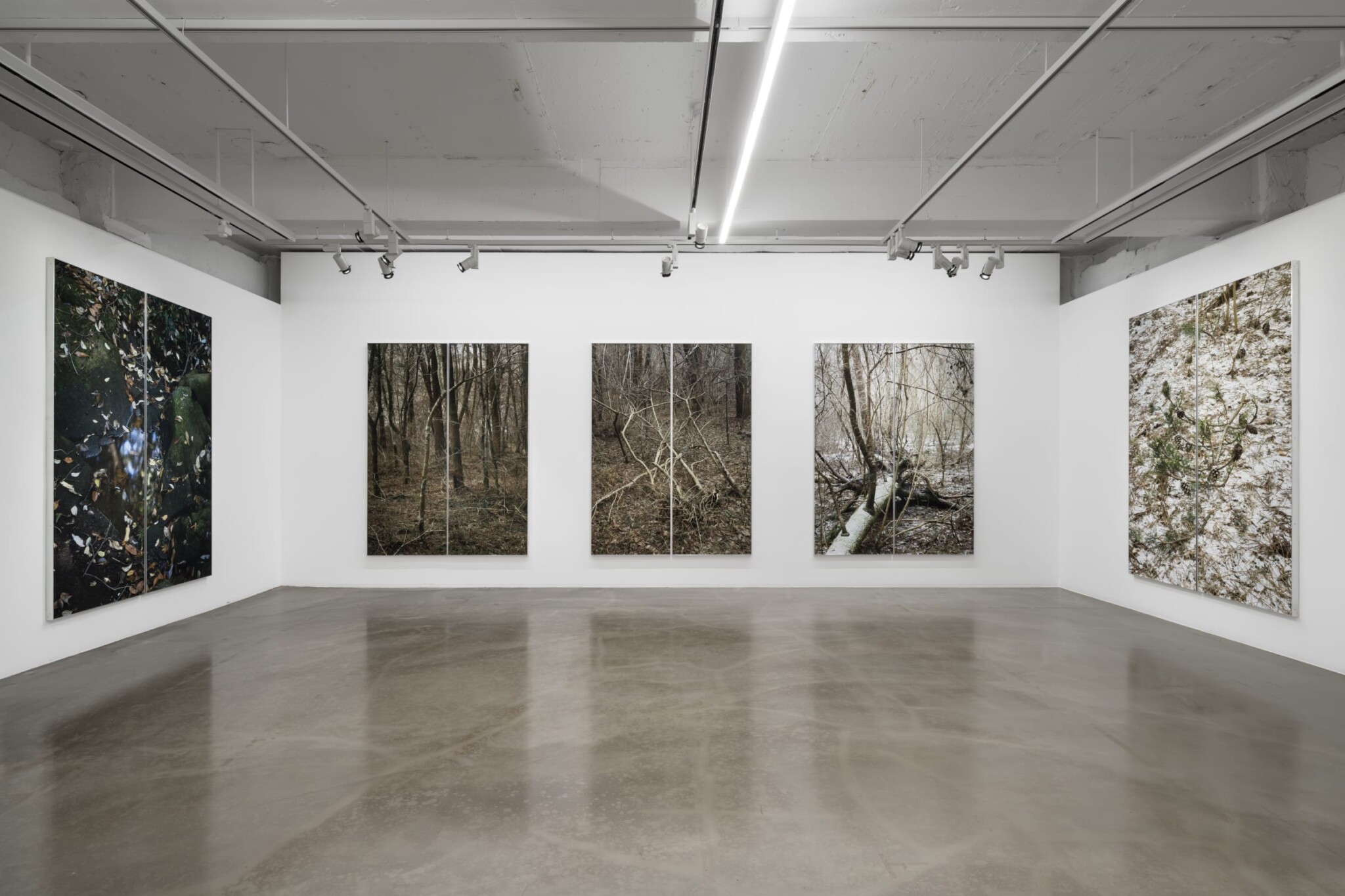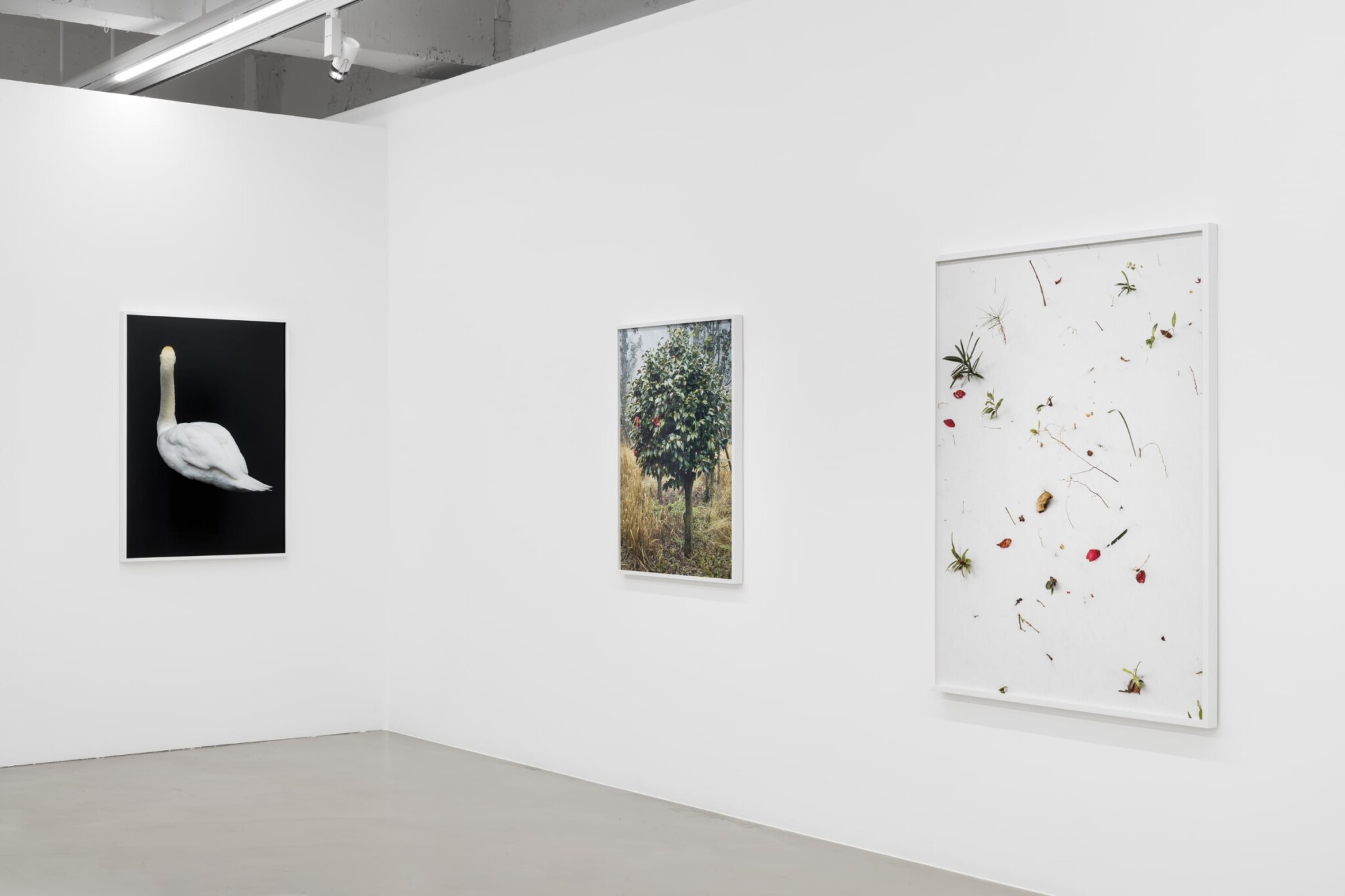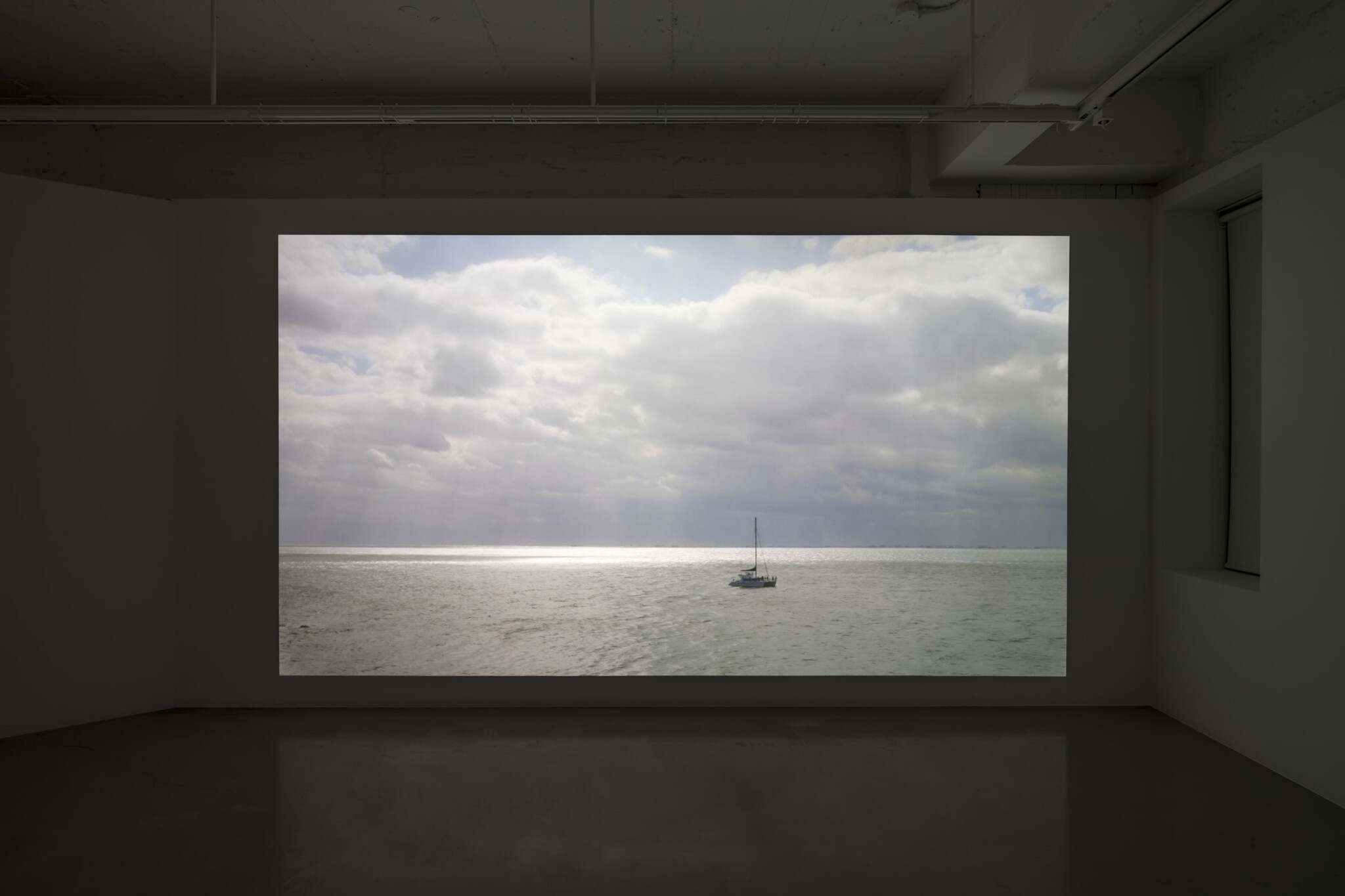Exhibition
Wilder
윌더

INSTALLATION VIEW “Wilder“, 2025. Courtesy of the Artist and Gallery Baton.
Gallery Baton is pleased to present 《Wilder》, a solo exhibition by Heeseung Chung (b. 1974), at its exhibition space in Seoul’s Hannam area from 30 September to 7 November 2025. For the past 17 years, Heeseung Chung has focused on creating image surfaces untethered by concepts as she explores an approach that transcends the essence of photography and its limits as a medium. This exhibition, which presents work from her new series Wilder and Faraway, so close and video work Landless, presents new possibilities for contemplating the photography medium within the artist’s vibrant sensibility.
In preparing for the exhibition, Chung explained that she often recalled the words of Roland Barthes in 『Camera Lucida』, where he wrote, “Ultimately, Photography is subversive not when it frightens, repels, or even stigmatizes, but when it is pensive, when it thinks.” This offers an excellent expression of Chung’s perspective toward landscapes and the forms of life imbued within them. Her work is designed so that viewers “lose their way” and seek out new possibilities through encounters with random presences. In the process, she asks the question, “Can photography think?”
With each exhibition, Chung selects one clear theme that she explores in a consistent and incisive way. She goes beyond simply producing images to suggest a form of contemporary practice: “thinking through photography.” Remembrance has a rear and front (2018), which was featured at the 12th Gwangju Biennale, was an experimental attempt to use large-scale printing and pronounced texture to visually represent the vibrating state where history and the present intersect. Dancing together in a sinking ship, which was presented at the 2020 Korea Artist Prize exhibition at the National Museum of Modern and Contemporary Art, Korea, used a complex installation of photography, text, and music to show the lives of contemporary artists and their relationship to art amid their various real-world struggles.
The title of this exhibition and the series Wilder draws upon an archaic word conveying the sense of “losing one’s way.” It took inspiration from the artist’s perception of the forest as a place of endless details and unfathomable density, where she would herself get lost. Chung mentions having taken long walks in the forests of Jeju Island while preparing for this exhibition, gaining a full sense of their different places in this way. In the process, the hierarchy between her photographing self and her forest subjects became blurred, as she experienced the contradiction of endless psychological possibilities opening to her in a geographically isolated setting. Single images are developed at scales of over two meters in height and separated into two panels, which are arranged at regular intervals in the gallery with uniform spaces in between. Delicate one-centimeter cracks in a given work serve as devices to accentuate the photograph’s symbolism along with the differences from reality. Through the act of venturing into the fissures and losing our way in the space beyond, we finally come to enter the forest and appropriate a “place of densely clustered silence.”
The series Faraway, so close incorporates the utter contingency of nature, including elements of time, weather, and the environment. In a departure from Chung’s previous studio-based approach with works such as Rose is a rose is a rose (2016), she draws here on uncontrollable external elements, where her lens resonates with the randomness of the world. Captured in high resolution, her images focus less on revealing the details of her objects than on raising questions about what we believe ourselves to “see.” The work Landless occupies a place between photography and video as it calmly observes a boat floating in the sea and the endless surrounding movements of clouds, water, and people. The work’s random aspects and the spontaneity of its music exist in disparate parallel, offering a fleeting experience with the free world etymologically imbued in the concept of “nature.” In this way, Heeseung Chung encourages us to perceive the image not simply as the interpretation of a reference but as an assemblage of endlessly shifting presences.
▣ About Artist
Heeseung Chung has been exploring the original meaning of the object and the meaning behind it through photography, and furthermore, she has continued to explore the limitations and possibilities of the photography as a medium. Chung makes an object with infinite potential that cannot be clearly defined by varying the space and time in which the object exists, or the compositional arrangement and arrangement. Her sensuously refined screen expands the visual act of ‘Seeing’ into a communicative experience by inducing interpretation based on the viewer’s subjective experience.
Heeseung Chung lives and work in Seoul, Korea. She receives BFA in Painting at Hongik University and two degrees BA and MA in Photography at London College of Communication, London. She was awarded the 11th Daum Prize in 2012 and was selected as a finalist for the 2020 Korea Artist Prize exhibition at the National Museum of Modern and Contemporary Art. In 2023, she received the inaugural Ralph Gibson Award in Korea. Through her diverse body of work, she has solidified her recognition as a leading figure in Korean contemporary photography. She has participated in exhibitions major art institutions such as Ilmin Museum of Art (2021), Art Sonje Center (2013), Leeum Museum of Art (2014), Seoul Museum of Art (2014), the 12th Gwangju Biennale (2018), and Belfast Photo Festival (2019).

INSTALLATION VIEW “Wilder“, 2025. Courtesy of the Artist and Gallery Baton.
갤러리바톤은 정희승(b. 1974)의 개인전 <윌더(Wilder)>를 9월 30일부터 11월 7일까지 한남동 전시 공간에서 개최한다. 정희승은 지난 17년간 사진의 본질과 매체적인 한계를 넘어서는 접근법을 모색하며, 관념에 묶여 있지 않은 이미지의 표면을 만드는 일에 집중해왔다. 새로운 연작 <윌더(Wilder)>, <멀리서 너무 가까이(Faraway, so close)>, 영상 <Landless>로 구성된 이 전시는 생동하는 작가의 감각 속에서 사진을 향한 새로운 사유의 가능성을 제시한다.
전시를 준비하며 작가가 수시로 떠 올렸다고 하는 롤랑바르트의 문장 “궁극적으로 사진은 겁을 주거나 반발하거나 심지어 낙인을 찍을 때 전복적인 것이 아니라 사색하고 생각할 때 전복적인 것 입니다.”(『카메라 루시다』)은 풍경과 거기에 깃든 생명들에게 향한 작가의 시선을 잘 대변한다. 전시는 우연적인 존재들과의 조우 가운데 관람객이 스스로 길을 잃고 새로운 가능성을 찾도록 구성되었으며, 작가는 이를 통해 “과연 사진은 생각할 수 있는가?”라는 질문을 다시금 던진다.
매 전시마다 하나의 명확한 주제를 정하고, 이를 일관되면서도 예리하게 파고드는 정희승은, 단지 이미지를 생산하는 것을 넘어 ‘사진을 통한 사유’라는 동시대적 실천을 제안해 왔다. 제12회 광주비엔날레에 소개한 <기억은 뒷면과 앞면을 가지고 있다(Remembrance has a rear and front, 2018)>는 역사와 현재가 교차하는 곳에서 진동하는 어떤 상태를, 대형 인화와 도드라진 질감으로 이미지화 한 실험적 시도였다. 2020년도 국립현대미술관 올해의 작가상<침몰하는 배에서 함께 추는 춤(Dancing together in a sinking ship)>에서는 현실에서 분투하는 동시대 예술가들의 삶과 예술의 관계를 사진, 글, 음악이 복합된 설치로 구현했다.
‘길을 잃는다’는 뜻을 지닌 고어 ‘Wilder’를 차용한 연작과 이번 전시명은 무수한 세부와 가늠할 수 없는 밀도로 얽혀 있는 숲이라는 장소를 작가가 지각하고 그 곳에서 길을 잃음으로써 착안되었다. 작가는 전시를 준비하며 제주도의 숲을 긴 시간 산책했고 여러 장소를 온전히 감각할 수 있었다고 한다. 그런 과정에서 사진을 찍는 자신과 포착되는 객체인 숲 과의 위계가 모호해지며, 지리적으로 고립되었으나 심리적으로 무한한 가능성이 열리는 모순을 경험했다. 2m 이상의 높이로 인화된 하나의 이미지는 두 개의 패널로 나뉘어, 전시장에서 균일한 틈을 사이에 두고 일정한 간격으로 배열되었다. 하나의 작품 가운데 형성된 1cm의 미세한 균열은 사진이 갖는 상징성과 실제의 차이를 부각 시키는 장치이다. 균열 속으로 그 너머로 길을 잃는 행위를 통해 우리는 비로소 숲에 들어서게 되며 “침묵이 밀도 높게 응축된 장소”를 전유하게 된다.
<멀리서 너무 가깝게(Faraway, so close)> 연작은 시간, 날씨, 환경을 비롯한 자연의 완전한 우연성을 수용한다. <장미는 장미가 장미인 것(Rose is a rose is a rose, 2016)>과 같은 과거 스튜디오 작업 방식에서 탈피하여 통제할 수 없는 외부 요소를 한껏 끌어안음으로써, 정희승의 렌즈는 세상의 우발성과 공명한다. 고해상도로 촬영한 사진들은 피사체를 낱낱이 드러내기 보다는 우리가 ‘본다’고 믿는 것이 무엇인지 되묻는 여전히 발화하는 이미지이다. 영상 <Landless>는 바다 한 가운데 떠 있는 배 그리고 구름, 바다, 사람들 주변의 무수한 움직임을 고요히 응시한 작품으로 사진과 영상의 중간 지점에 놓여있다. 영상의 우연성과 음악의 즉흥성은 이질적인 평행을 이루며, 자연이라는 어원에 깃든 자유로운 세계의 한 단면을 잠시나마 경험하도록 한다. 결국, 정희승은 이미지가 지시체로서의 해석을 탈피해 끝없이 변화하는 존재들의 집합임을 인식하도록 유도한다.
정희승은 홍익대학교 미술대학 회화과를 졸업한 후, 런던 컬리지 오브 커뮤니케이션 대학교(London College of Communication)에서 사진학과 학사와 석사를 전공했다. 제11회 다음작가상 수상(2012), 국립현대미술관 올해의 작가상 전시작가로 선정(2020), 제1회 랄프 깁슨 어워드(2023)를 수상하며 한국 현대사진을 대표하는 작가로서 다양한 작업을 소개해왔고 인지도를 공고히 했다. 일민미술관(2021), 아트선재센터(2013), 리움미술관(2014), 서울시립미술관(2014), 제12회 광주비엔날레(2018), 벨파스트 포토 페스티벌(Belfast Photo Festival, 2019)등 유수 미술기관의 전시에 참여해왔다.

INSTALLATION VIEW “Wilder“, 2025. Courtesy of the Artist and Gallery Baton.
2025. 9. 30. (Tue) – 2025. 11. 07. (Fri)
Gallery Baton